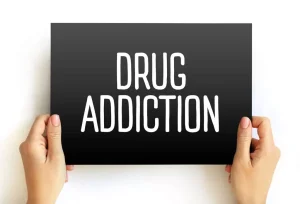
Studies that have assessed the prevalence of ACM among IDCM patients have found high alcohol consumption in 3.8% to 47% of DCM patients. The lowest prevalence of ACM among DCM (3.8%) was obtained from a series of 673 patients admitted to hospital consecutively due to HF in the state of Maryland[27]. This study included not only DCM, but also all causes of left ventricular dysfunction, including hypertensive heart disease, ischemic cardiomyopathy and heart valve disease. Furthermore, the inclusion criteria for ACM were very strict and required a minimum consumption alcoholic cardiomyopathy of 8 oz of alcohol (200 g or 20 standard units) each day for over 6 mo. In contrast, European studies focusing on the prevalence of ACM included only subjects diagnosed with DCM and applied the consumption threshold of 80 g/d for ≥ 5 years, finding an ACM prevalence of 23%-47% among idiopathic DCM patients[9-12] (Figure (Figure11). Askanas et al[21] found a significant increase in the myocardial mass and of the pre-ejection periods in drinkers of over 12 oz of whisky (approximately 120 g of alcohol) compared to a control group of non-drinkers.
Risk factors

Alcohol has toxic effects, but your body can limit the damage and break alcohol down into non-toxic forms if you don’t drink too much too quickly. However, consistent heavy drinking strains those protective processes — especially in your liver — making them less effective. Ultimately, your body can’t keep up with the damage to multiple organ systems, including your heart.
Organ-Specific Toxicologic Pathology
Alcohol-induced cardiomyopathy is a condition where consuming too much alcohol damages your heart. That weakens your heart muscle, keeping it from pumping as well as it should. Over time, this means your heart can’t pump blood as effectively, which reduces your body’s available oxygen supply. Studies of alcohol and stroke are complicated by the various contributing factors to stroke. Heavier drinkers are apparently at a higher risk of hemorrhagic stroke, whereas moderate drinking might be neutral or even result in a reduced risk of ischemic stroke.
- Symptomatic management in people with secondary heart failure to address any related consequences is also vital in managing ACM.
- The natural history and long-term prognosis studies of Gavazzi et al[10] and Fauchier et al[11] compared the evolution of ACM patients according to their degree of withdrawal.
- In CAD, diabetes, and stroke prevention the J‑type mortality curves even indicate some benefit apart from the social ”well-being“.
- A diverse variety of arrhythmias appear early and may worsen the course of ACM, atrial fibrillation being the most frequent [60] and ventricular tachycardia the most deleterious [61].
- Antioxidant, anti-inflammatory, anti-apoptotic, and antifibrogenic mechanisms try to avoid myocyte necrosis and heart fibrosis [14,30,58].
- Myocardial depression secondary to alcohol is initially reversible however prolonged sustained alcohol use leads to irreversible dysfunction.
Continuing Education Activity

An excellent marker is carbohydrate deficient transferrin (CDT), which best detects chronic alcohol consumption alone [122, 123] or in combination with the other markers such as GGT [8, 124]. Markers such as ethyl sulphate, phosphatidyl ethanol, and fatty acid ethyl esters are not routinely done. For a comprehensive overview see Table 2 with combined data from [6, 8, 24, 28]. Although the severity of histological alterations on https://ecosoberhouse.com/ endomyocardial biopsy correlates with the degree of heart failure in one of our studies, biopsy is not in common use for prognostic purposes [117]. Even the recovery after abstinence of alcohol is hard to predict based on morphometric evaluation of endomyocardial biopsies [118]. As early as in 1915, Lian [45] reported in middle-aged French servicemen during the first world war that heavy drinking could lead to hypertension.
It’s important to be honest with your doctor about the extent of your alcohol use, including the number and amount of drinks you have each day. This will make it easier for them to make a diagnosis and develop a treatment plan. It’s important to note that alcoholic cardiomyopathy may not cause any symptoms until the disease is more advanced.
Up to 42 percent of people who keep drinking alcohol after being diagnosed with alcoholic cardiomyopathy will likely die within three years.4 However, the disease may be reversible if you stop drinking alcohol. In some cases, alcoholic cardiomyopathy is caused by a genetic mutation that makes your body process alcohol much slower than others.5 You can become intoxicated or damage your body with fewer drinks. Alcohol can have a toxic effect on many of your organs, such as the liver and heart. Alcoholic cardiomyopathy is diagnosed when the heart muscle and surrounding blood vessels stop functioning correctly. The first paper to assess the natural history and long-term prognosis of ACM was published by McDonald et al[69] in 1971. He recruited 48 patients admitted to hospital with cardiomegaly without a clear aetiology and severe alcoholism.

Data Availability
Your heart’s shape is part of how that timing works, and when parts of your heart stretch, it can disrupt that timing. If it takes too long — even by tiny fractions of a second— that delay can cause your heart to beat out of sync (a problem called dyssynchrony). Similarly, alcohol can have a toxic effect on your heart and cause scar tissue to form. That scar tissue can also cause potentially life-threatening arrhythmias (irregular heart rhythms). The muscles that control the lower chambers of your heart, the left and right ventricle, are especially prone to this kind of stretching. These chambers are important as they do the majority of the work of your heart, with the right ventricle pumping blood to your lungs and the left ventricle pumping blood to your entire body.

However, no differences were found in these parameters between the sub-group of individuals who had been drinking for 5 to 14 years and the sub-group of individuals who had a drinking history of over 15 years. Kino et al[22] found increased ventricular thickness when consumption exceeded 75 mL/d (60 g) of ethanol, and the increase was higher among those subjects who consumed over 125 mL/d (100 g), without specifying the duration of consumption. In another study on this topic, Lazarević et al[23] divided a cohort of 89 asymptomatic individuals whose consumption exceeded 80 g/d (8 standard units) into 3 groups according to the duration of their alcohol abuse. Subjects with a shorter period of alcohol abuse, from 5 to 10 years, had a significant increase in left ventricular diameter and volume compared to the control group. However, a systolic impairment was not found as the years of alcoholic abuse continued. Alcohol-induced cardiomyopathy remains a relevant health problem, for which the mainstay of treatment is alcohol abstinence.
Diagnosis and Tests
- According to the American Heart Association (AHA) and other US-based guidelines, alcohol intake recommendations are provided to promote responsible drinking habits and maintain overall health.
- As women typically have a lower BMI than men, a similar amount of alcohol would reach a woman’s heart after consuming smaller quantities of alcohol.
- Completely abstaining from alcohol is the key recommendation if you have alcohol-induced cardiomyopathy.
- Up to 42 percent of people who keep drinking alcohol after being diagnosed with alcoholic cardiomyopathy will likely die within three years.4 However, the disease may be reversible if you stop drinking alcohol.
- However, not drinking at all is still the best course of action whenever possible.
In fact, Brandt et al.54 observed that in ALDH2-deficient mice, the most important increase in mitochondrial superoxide levels (which is the major species of ROS) is due to acetaldehyde, not ethanol. By inhibiting NOX2 (the most important superoxide-producing enzyme) with apocynin, they observed a decrease in ethanol- and acetaldehyde-induced superoxide levels. This review will provide an updated view of this condition, including its epidemiology, pathogenesis, diagnosis, and treatment (Graphical Abstract). Some studies have suggested that even moderation of alcohol consumption similar outcomes as compared to abstinence. Enzymatic activity changes which are seen in the idiopathic cardiomyopathy including decreased activity of oxygen reduction mitochondrial enzymes, increased fatty acid uptake and increased lysosomal/microsomal enzyme activity can be seen. They commonly include fatigue, shortness of breath, and swelling of the legs and feet.